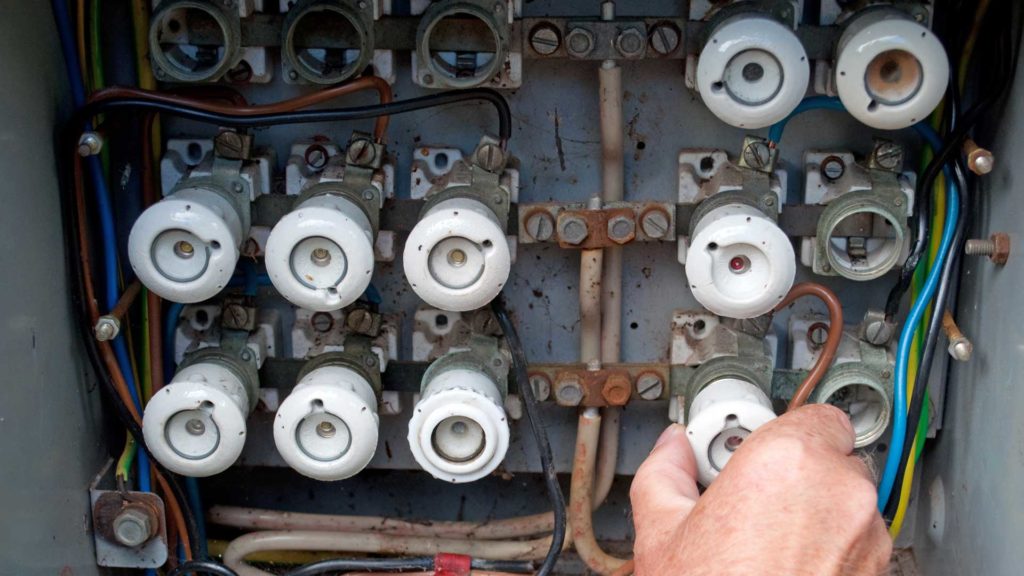Knob and Tube Electrical Wiring Basic Information
Information about Knob and Tube
Knob-and tube electrical wiring is very common in older homes and is somewhat controversial. Having knob-and-tube wiring in your house isn’t always a problem and in fact, it is not inferior to modern wiring in many ways. Understanding knob-and-tube wiring and its common issues will help you determine whether or not it needs to be replaced.
So what is exactly is knob-and-tube wiring? This type of wiring was used in homes until around the 1930’s. The wire gets its name from the ceramic knobs that support it and the ceramic tubes that protect the wire as it passes through wood framing members such as floor joists.
One of the main differences between modern wiring and knob-and-tube is that the black and white wires are run separately and are spaced several inches apart in knob-and-tube wiring. In modern wiring, the black wire, white wire and ground wire are all wrapped up in a single cable. Another difference is the wire insulation. Modern wiring is insulated with plastic while knob-and-tube uses rubber. The breakdown of the insulation over time on knob-and-tube wiring is often the reason it is replaced. It’s important to note that this is frequently the result of overheating or mechanical abuse.

The fact that the copper wire used in knob and tube is larger diameter than that in today’s wire is an advantage for knob and tube. Larger wires stay cooler as electricity flows through them. The fact that the wire is older and has been in service for many years is a disadvantage of knob-and-tube, of course. Another is the absence of a ground wire, which creates an emergency path for stray electricity that helps avoid shocks. Modern cable has a ground wire, knob-and-tube does not.
Some of the other common problems you may come across with knob-and-tube include:
• Poor Connections: Problems with knob-and-tube wire almost always result from poor quality connections made after original installation.
• Damage: Knob-and-tube wiring is invariably old and may have been subjected to multiple handymen, mechanical abuse and wear and tear over the years.
• Brittleness: As mentioned earlier, the rubber insulation on knob-and-tube can become brittle. The wire will often become brittle in high heat areas, including connections above ceiling light fixtures.
• Circuits Extended: Since older electrical systems had few circuits by today’s standards, the chances of each knob-and-tube circuit having been extended over the years is very good. This increases the possibility of poor connections.

These problems can cause wires to short circuit or overheat. Should you have any concerns about these issues surrounding knob-and-tube, contact B&G Electrical Contracting for a free estimate.
If you don’t have any particular issues but would like to replace the knob-and-tube wiring in your house, the best time to do this is when you are remodeling your home. This is less expensive as the walls, ceilings and floors are open and accessible. Many homeowners replace knob-and-tube as individual rooms are remodeled. Remodeling projects usually include adding more receptacles, ground-fault- and arc-fault circuit interrupters. It’s very common to find pre-1950s homes with a combination of modern wiring and knob-and-tube.
While knob-and-tube wiring is older, it is not necessary to replace it simply because you have it in your house. You should have it inspected and evaluated annually.
One last important consideration: Many insurance companies may not insure homes with knob-and-tube wiring, no matter what its condition. You may need to replace the wiring for insurance reasons. B&G Electrical Contracting works with Homeowners Associations, City and State Inspectors as well as Condo and Industrial Administrators to help with this process


